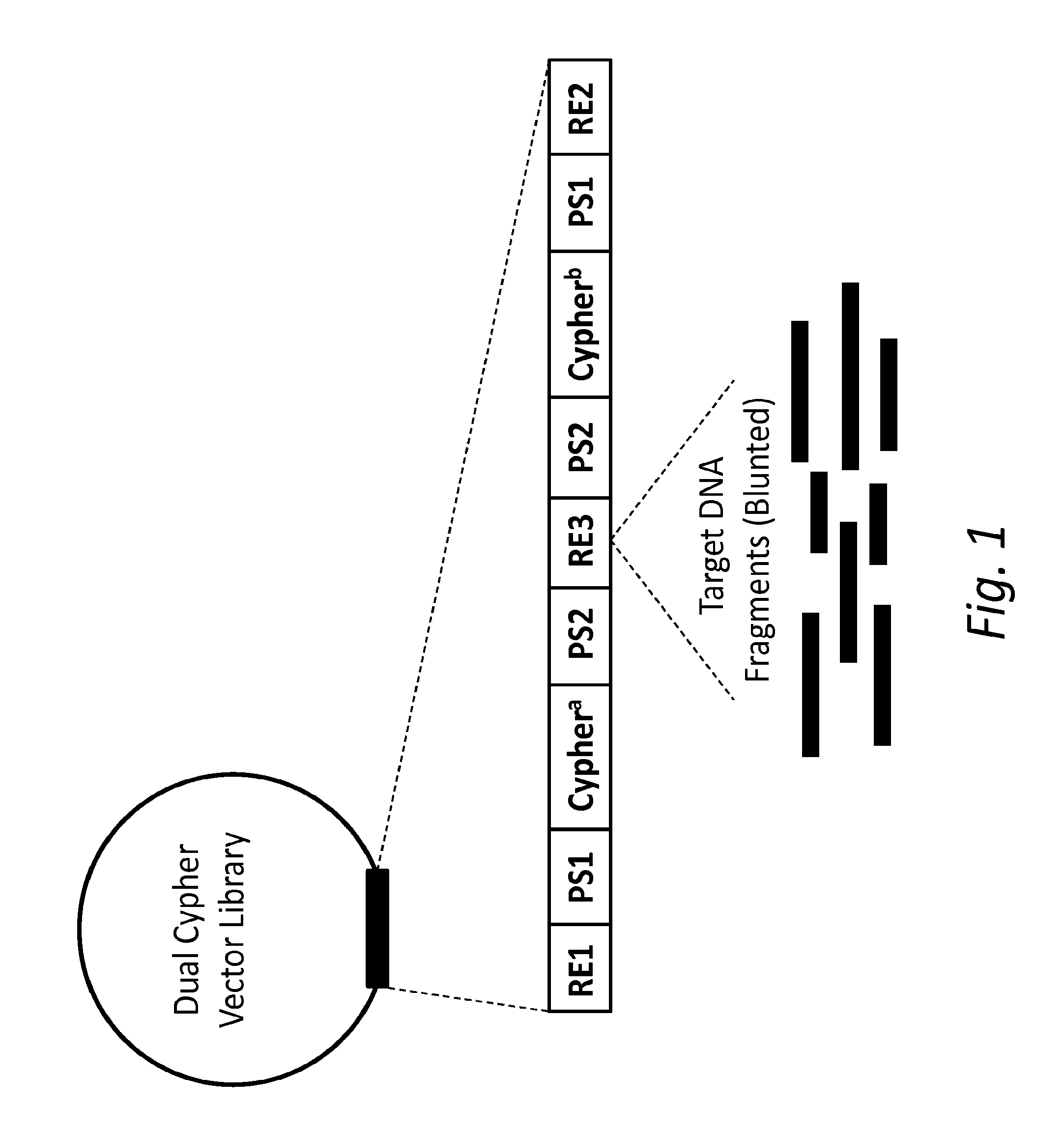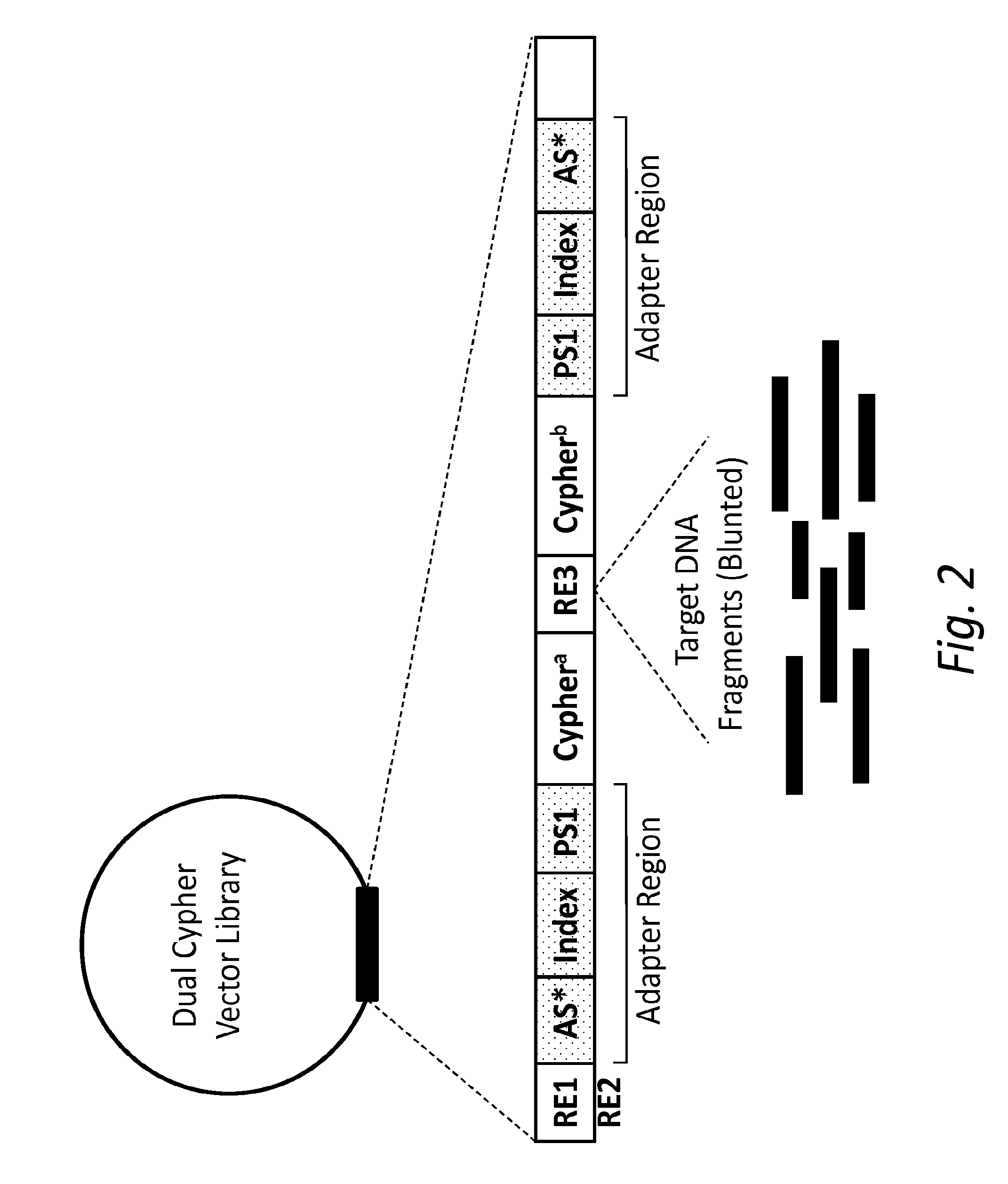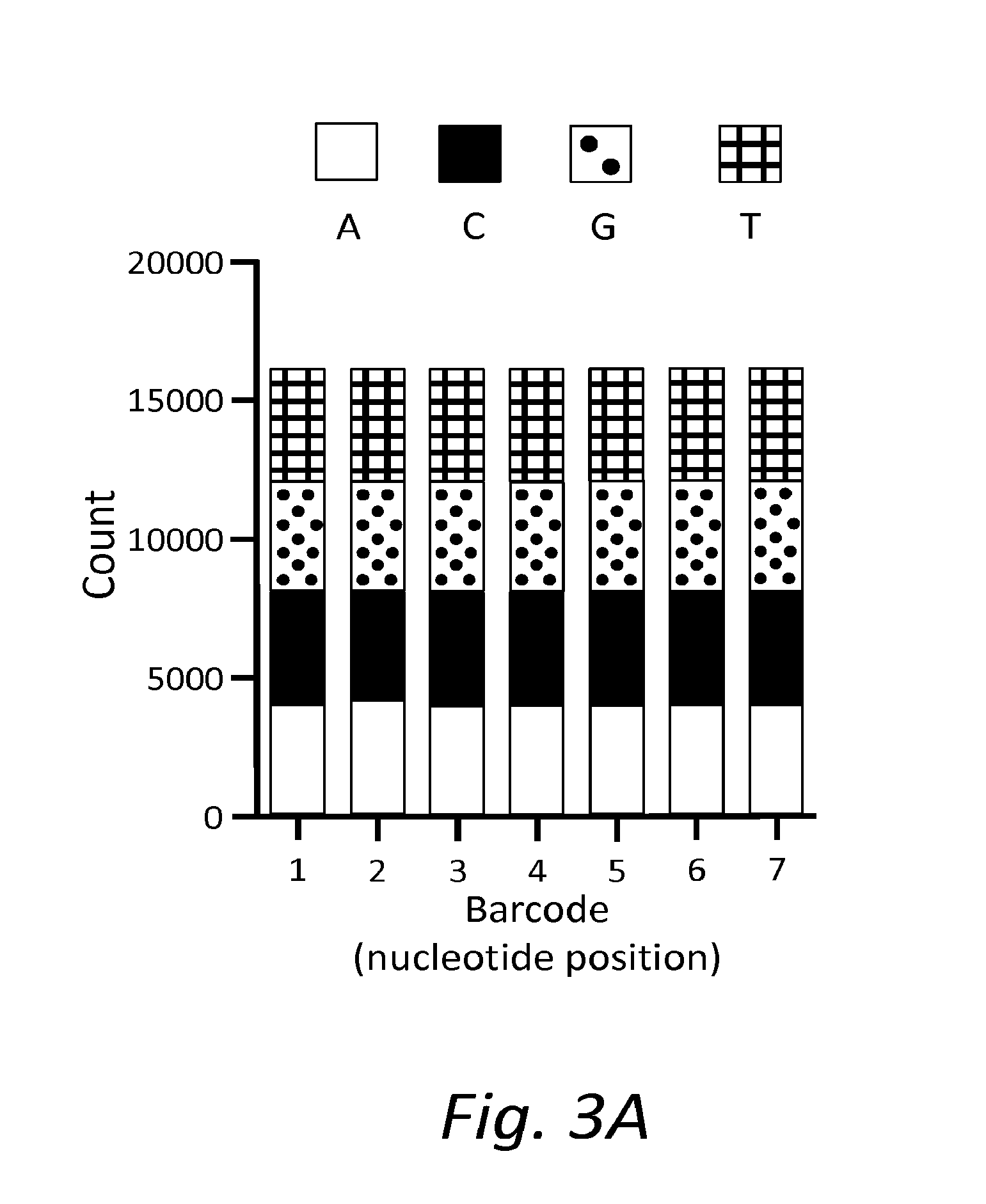Compositions and methods for accurately identifying mutations
a technology applied in the field of composition and detection method of accurately detecting mutations using sequencing, can solve the problems of insufficient sensitiveness of available sequencing methods inability to detect spontaneous mutations (e.g., substitution, insertion, deletion, duplication, etc.) and inability to detect rare mutations
- Summary
- Abstract
- Description
- Claims
- Application Information
AI Technical Summary
Benefits of technology
Problems solved by technology
Method used
Image
Examples
Embodiment Construction
[0015]In one aspect, the present disclosure provides a double-stranded nucleic acid library wherein target nucleic acid molecules include dual cyphers (i.e., barcodes or origin identifier tags), one on each end (same or different), so that sequencing each complementary strand can be connected or linked back to the original molecule. The unique cypher on each strand links each strand with its original complementary strand (e.g., before any amplification), so that each paired sequence serves as its own internal control. In other words, by uniquely tagging double-stranded nucleic acid molecules, sequence data obtained from one strand of a single nucleic acid molecule can be specifically linked to sequence data obtained from the complementary strand of that same double-stranded nucleic acid molecule. Furthermore, sequence data obtained from one end of a double-stranded target nucleic acid molecule can be specifically linked to sequence data obtained from the opposite end of that same do...
PUM
| Property | Measurement | Unit |
|---|---|---|
| length | aaaaa | aaaaa |
| somatic mutation frequency | aaaaa | aaaaa |
| mutation frequencies | aaaaa | aaaaa |
Abstract
Description
Claims
Application Information
 Login to View More
Login to View More - R&D
- Intellectual Property
- Life Sciences
- Materials
- Tech Scout
- Unparalleled Data Quality
- Higher Quality Content
- 60% Fewer Hallucinations
Browse by: Latest US Patents, China's latest patents, Technical Efficacy Thesaurus, Application Domain, Technology Topic, Popular Technical Reports.
© 2025 PatSnap. All rights reserved.Legal|Privacy policy|Modern Slavery Act Transparency Statement|Sitemap|About US| Contact US: help@patsnap.com



